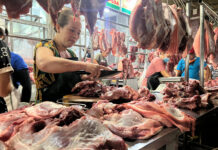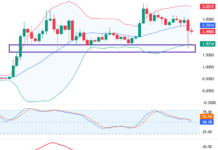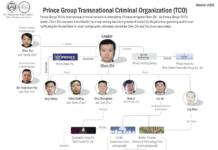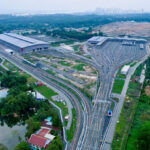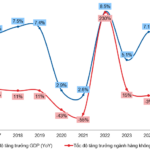Historically, Vietnam’s fruit and vegetable exports primarily consisted of fresh produce, heavily reliant on seasonal availability and the Chinese market. However, a new wave of Vietnamese agricultural products, such as dried mango slices, crispy dragon fruit, and fragrant dried longan, is now making its mark on global shelves.
Surge in Sales
According to the Vietnam Fruit and Vegetable Association (Vinafruit), in the first eight months of 2025, the country’s fruit and vegetable exports reached approximately $4.63 billion, a 2.1% decrease compared to the same period last year. While fresh produce sales have plateaued, processed fruits and vegetables saw an impressive 37% growth, reaching nearly $1.19 billion.
This shift is not coincidental but stems from the long-established trend of sustainable consumption. A recent survey by Amazon in the U.S. revealed that 74% of Americans snack daily, with 56% often replacing main meals with snacks. Notably, 47% prefer fruits, and 38% opt for vegetables, indicating a growing demand for healthier snack options. In this context, naturally dried fruits and vegetables, free from preservatives and low in sugar, are becoming increasingly popular.
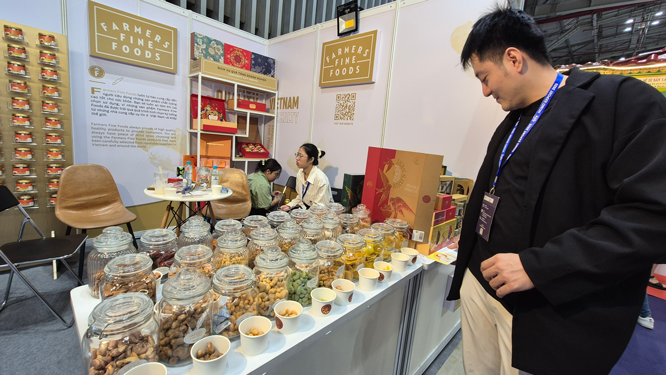
Processed fruit and vegetable products showcased at a food fair in Ho Chi Minh City
Seizing this opportunity, many Vietnamese businesses have introduced dried fruit snacks to global e-commerce platforms. Between 2021 and 2024, sales of Vietnamese fruit snacks on Amazon skyrocketed by over 550%, while dried fruits saw a 250% increase.
Mr. Hoàng Mạnh Cường, Business Director of Vinaxo LLC in Đồng Tháp, a company specializing in exporting dried fruits to the U.S., noted that international consumers, particularly Americans, favor naturally dried products without additives, preserving the original fruit flavors. “They are willing to pay a premium for ‘natural dried fruit’ that is free from added sugar and preservatives. This demands meticulous raw material selection and investment in modern technology to ensure crispness, natural sweetness, and vibrant colors,” he explained.
The trend toward healthy consumption is not limited to the U.S. but is spreading globally. The Import-Export Department of the Ministry of Industry and Trade, citing a report by Future Market Insights, predicts that the global dried fruit and vegetable market will grow from $88.2 billion in 2025 to $192.2 billion by 2035, with an average annual growth rate of 8.1%.
This growth is driven by the increasing demand for convenient yet nutritious food, coupled with consumers’ shifting lifestyles toward health and sustainability.
Niche Market, Higher Costs
Mr. Nguyễn Văn Mười, Deputy Secretary-General of Vinafruit, views the strong growth in processed fruits and vegetables as a positive sign for the industry, reflecting a successful shift from exporting raw materials to value-added processed products.
“While profits have not yet matched the growth rate, this is a crucial step in enhancing the value of Vietnamese agricultural products and reducing dependence on weather and traditional markets,” Mr. Mười commented.
According to Mr. Mười, some businesses face a 20% countervailing duty when exporting processed goods to the U.S., squeezing profit margins and forcing price reductions to maintain market share. Therefore, businesses are urging the government and relevant ministries to negotiate tariff reductions and provide trade promotion support to expand markets for processed products.
Amazon representatives advise Vietnamese businesses to focus on product development strategies aligned with local consumer habits. In the U.S., consumers prefer small, convenient packaging suitable for work or exercise.
Additionally, packaging should clearly display nutritional information, quality certifications, and allergen warnings to build trust. “A great product is not enough; packaging and brand storytelling are equally important,” emphasized the Amazon representative.
Beyond exports, many domestic companies are exploring “exporting in place” through the tourism sector. Mr. Võ Thanh Lộc, Commercial Director of Farmers Market, is developing freeze-dried fruit products and innovative dishes like dried mango sticky rice and dried durian sticky rice for international tourists.
Mr. Lộc noted that today’s travelers seek not only delicious food but also authentic local culinary experiences. “Dried fruit packs are not just snacks but a way to take a piece of Vietnam’s flavors home,” he observed.
However, Mr. Lộc acknowledged that the market for natural, additive-free, and preservative-free products remains limited due to higher costs. Farmers Market primarily collaborates with travel companies, producing private-label goods for foreign customers—a niche but sustainable approach.
Despite challenges, the transformation of processed fruits and vegetables is not only boosting export value but also offering a long-term solution for Vietnam’s agriculture to break free from the “boom-and-bust” cycle. Businesses are becoming more resilient to weather fluctuations, market shifts, and trade barriers.
Furthermore, as processors demand high-quality raw materials, farmers are adopting cleaner cultivation practices and traceability systems. This closed-loop agricultural value chain enhances productivity and sustainable profitability.
China Remains the Primary Market
Within the bright landscape of processed fruits and vegetables, China remains a cornerstone market. According to the General Department of Customs, in September 2025 alone, fruit and vegetable exports reached $1.313 billion—the highest ever. Over the first nine months, total exports hit $6.131 billion, rebounding after a slow start to the year. China remains the largest market, accounting for 63% of total exports, with a value of $3.857 billion, up 1.8% from the same period in 2024, primarily driven by durian exports.
The formal approval of durian exports to China and the significant increase in import volumes highlight the vast potential for Vietnam to expand into deeper processed products like dried durian, durian juice, and durian jam.
Why FDI Waves Reversed, Costing Northern Vietnam’s Largest Industrial Hub Its Crown
After four months of provincial mergers, Vietnam’s economic landscape is beginning to reveal a fresh palette of opportunities. The consolidation and expansion of development spaces have not only facilitated infrastructure connectivity and resource sharing among localities but have also rapidly amplified the ripple effect in attracting foreign direct investment (FDI).
Vietnam’s Mining Sector Burdened by Higher Taxes, Fees Than US, Australia, Raising Business Concerns
Mining enterprises in Vietnam currently face a staggering nine different types of taxes. According to tax experts, the country’s mining sector bears a total tax and fee burden of approximately 25% of revenue, significantly surpassing the 5-10% average seen in countries like Australia, the United States, and Malaysia.
Soaring High with VJC: Unlocking the Skies (Part 1)
Vietjet Aviation Joint Stock Company (HOSE: VJC) has solidified its position as a leading player in Vietnam’s aviation industry, boasting remarkable growth rates, a substantial market share, and a well-defined international expansion strategy. This impressive performance has garnered significant attention from investors in the market.

